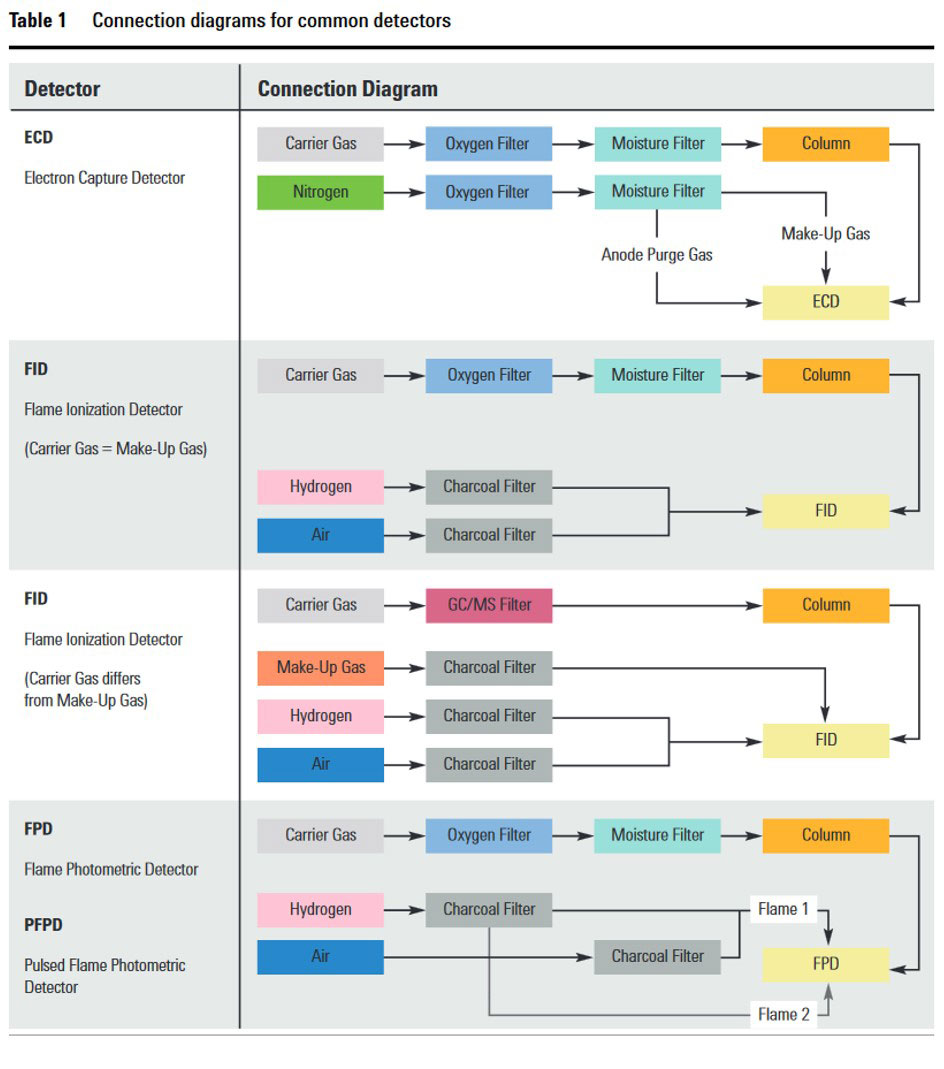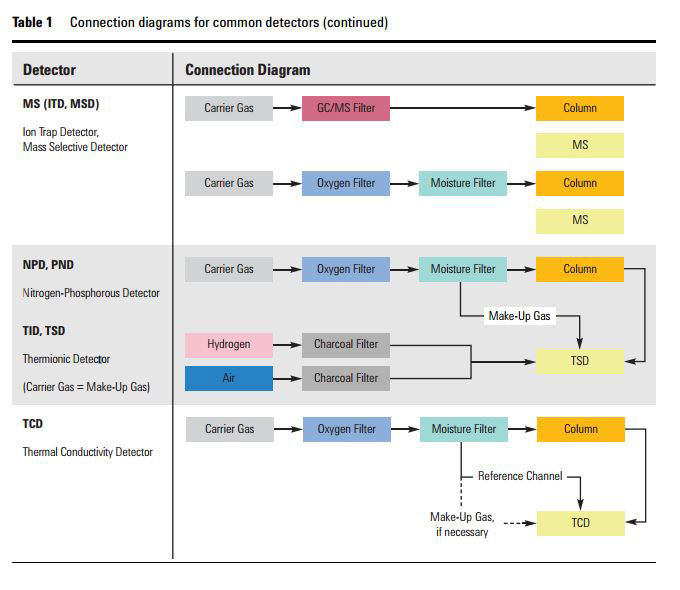The Precision generator range has been designed to produce ultra-high purity (UHP) gases to supply GC applications for carrier and detector gas supply.
Detectors
For detector supply (excluding ECD and TCD) there is no need to use traps in line with Precision generators, however, some labs may be required to use traps to adhere to GLP or SOPs. The figure below from Agilent shows which traps should be used in conjunction with different gas sources for common detectors.
Zero Air
The level of moisture in zero air depends on compressor air supply, which will vary depending on ambient conditions and the catalytic process within Peak Zero Air generators, which produces additional trace levels of moisture, like all zero air generators on the market. The level of moisture in Precision Zero Air has no effect on GC-FID detector function, or on the baseline. If the zero air generator inlet conditions are being adhered to from the compressed air supply, it is serviced as recommended, and is being used within its operating conditions as advised in the User Manual then Peak see no need for moisture traps to be used in-line with the zero air generators.
This is further supported by Agilent's gas clean filter guide for Chromatography, ICP and TOC, which states that for FID detectors only activated charcoal hydrocarbon filters are required in-line for zero air, with no mention of moisture traps.

Source: Agilent gas clean filter guide

Source: Agilent gas clean filter guide
Carrier Gas
For carrier supply, Peak recommends the Precision Hydrogen Trace and the Precision Nitrogen Trace. Although these generators can be used to supply the GC directly, for extra peace of mind, traps can be used as outlined by the major GC manufacturers. Most end users will use a carrier gas trap, which removes a combination of hydrocarbons, moisture and oxygen.
For customers using GC-MS, Peak would always recommend the use of carrier gas traps.